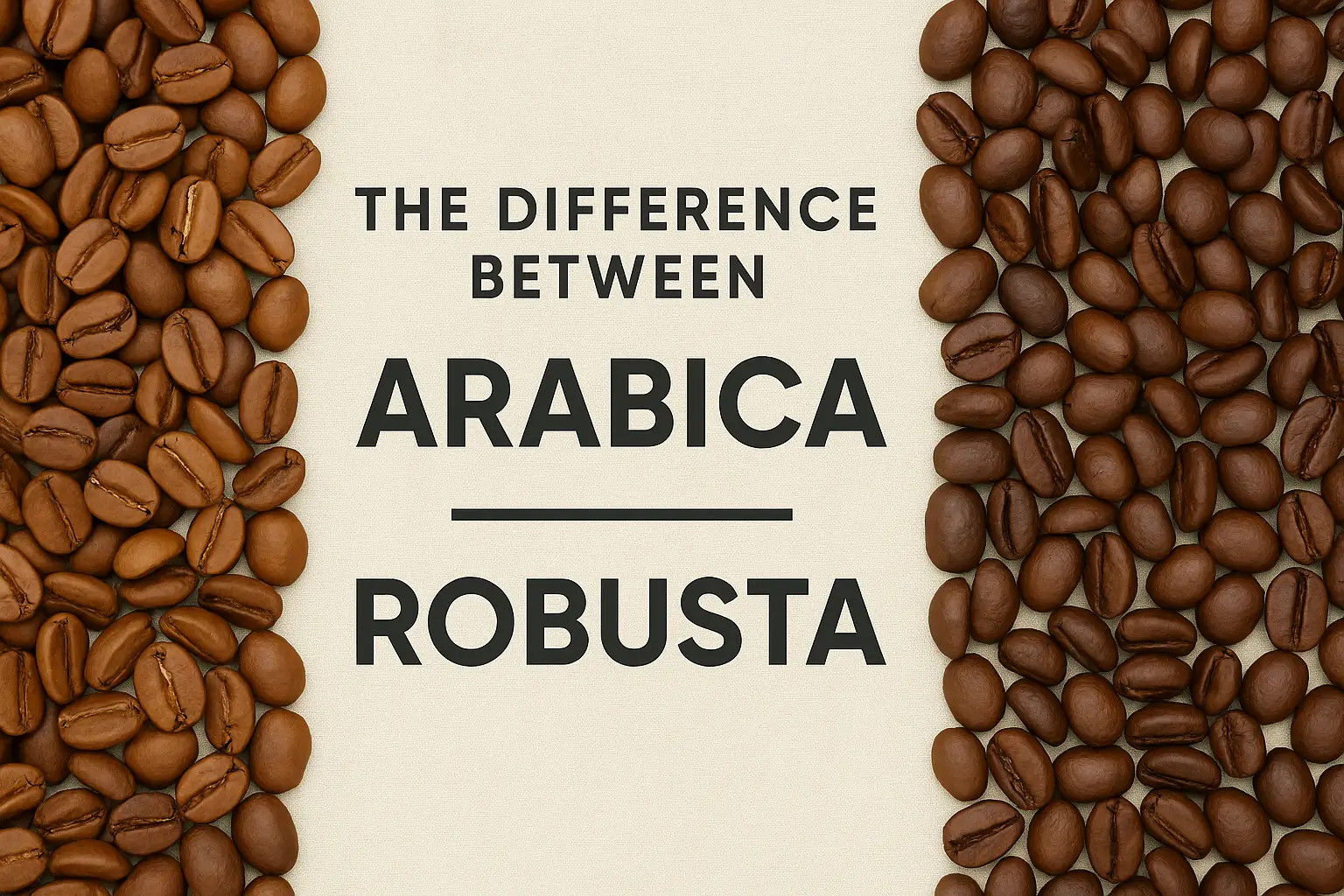When browsing coffee beans, you’ve probably seen the terms “Arabica” and “Robusta.” These are the two main species of coffee used in global production, and understanding their differences can significantly influence your buying decisions and coffee experience. In this article, we’ll break down what sets Arabica and Robusta apart in terms of taste, growing conditions, caffeine content, and more.
What Are Arabica and Robusta?
Coffea arabica and Coffea canephora (commonly known as Robusta) are the two most commercially important coffee species.
- Arabica: Accounts for about 60–70% of global coffee production.
- Robusta: Makes up around 30–40%, primarily grown in Africa and Southeast Asia.
Key Differences Between Arabica and Robusta
1. Flavor Profile
- Arabica:
- Smoother, more complex flavors
- Notes of fruit, floral, chocolate, and sugar
- Less bitterness
- Robusta:
- Stronger, harsher taste
- Earthy, nutty, sometimes rubbery
- More bitter and less sweet
Winner for flavor: Arabica—especially preferred in specialty coffee
2. Caffeine Content
- Arabica: 1.2–1.5% caffeine
- Robusta: 2.2–2.7% caffeine
Why it matters: Robusta’s higher caffeine makes it more bitter and more resistant to pests. It also gives a stronger “kick.”
3. Plant Characteristics
- Arabica:
- Grows at higher altitudes (600–2,000 meters)
- More delicate and disease-prone
- Requires cooler climates
- Robusta:
- Grows at lower altitudes
- More resilient to pests and harsh weather
- Easier and cheaper to cultivate
4. Price and Market Use
- Arabica:
- More expensive due to cultivation difficulty
- Used in premium, specialty coffee
- Robusta:
- Cheaper and more abundant
- Often used in instant coffee and cheaper blends
5. Crema in Espresso
- Robusta produces a thicker crema—making it a common addition in espresso blends
- Arabica offers better flavor complexity
Which One Should You Choose?
Choose Arabica if you:
- Value complex, smooth, and sweet flavors
- Enjoy specialty or single-origin coffee
- Prefer lighter roasts and pour-over methods
Choose Robusta if you:
- Want a strong, bitter kick
- Use espresso or enjoy dark roasts
- Need a caffeine boost
- Want a more affordable option
Blends: The Best of Both Worlds
Many commercial espresso blends mix Arabica and Robusta to balance flavor, crema, and cost. A common ratio is 80/20 Arabica to Robusta.
This provides the smoothness of Arabica with the body and crema of Robusta—especially desirable in Italian-style espresso.
Sustainability and Farming Considerations
- Arabica farming is more sensitive to climate change.
- Robusta is hardier and may play a larger role in future sustainable coffee production.
- Ethical sourcing and organic practices apply to both types.
Final Sip
Understanding the difference between Arabica and Robusta empowers you to choose coffee that suits your taste, budget, and brewing method. While Arabica dominates specialty cafés with its nuanced flavors, Robusta has a rightful place in espresso blends and strong, functional brews.
So next time you’re selecting beans, check the label and consider your flavor goals. Whether you’re sipping a fruity Ethiopian or a bold Vietnamese blend, knowing your bean makes every cup more satisfying.
